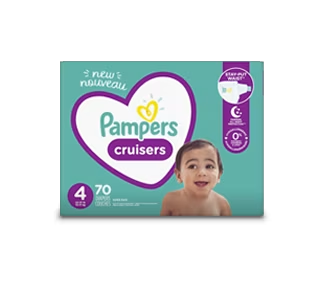Heat Rash (Prickly Heat) in Babies and Toddlers
It's hard to see your baby come down with heat rash, which can be uncomfortable especially if it’s on her face, if she has heat bumps on her body, and if there’s itching involved. Although adults can get heat rash, too, newborns and toddlers are more susceptible to it. Read on to learn about the causes of heat rash, the types of home remedies that could be effective, and when you may need to see your child’s healthcare provider for treatment.
What Is Heat Rash and What Does It Look Like?
Heat rash is a condition that occurs when blocked sweat ducts prevent perspiration from evaporating. Instead, it becomes trapped under the skin and causes red or fluid filled bumps. Heat rash is most common in babies, toddlers, and young children during hot and humid weather.
What Causes Heat Rash on Your Baby?
Here are a few factors that that can cause heat rash or make it more likely to develop:
Immature sweat ducts. A newborn baby has a higher risk of contracting heat rash because her sweat ducts are still developing. If your infant is in an NICU incubator, has a fever, or is simply overdressed, heat rash may be more likely to develop.
Hot weather. Heat rash is more common in hot, humid climates.
Physical exercise. Sweat-inducing physical activity can make heat rash more likely.
Overdressing. Overheating due to wearing too many layers of clothing or sleeping under too many blankets can cause heat rash.
What Are the Signs and Symptoms of the Different Types of Heat Rash?
Heat rash appears as tiny red bumps around your child’s pores in the areas of his skin that tend to get moist, or in spots where clothing creates friction, such as the folds of his neck, upper chest, arms, legs, and his diaper area. There are several types of heat rash:
Miliaria crystallina. This is the mildest form of heat rash, affecting the top layer of skin. It looks like clear, fluid-filled blisters or bumps that break open easily.
Miliaria rubra. This type of heat rash occurs deeper in the skin, and is referred to as “prickly heat” because its symptoms include an itching or prickly feeling in addition to bumps.
Miliaria pustulosa. This is type of heat rash comes with inflammation leading to the blisters filling with pus.
Miliaria profunda. This less common type of heat rash affects a deep layer of skin, creating firm lesions that look like goose bumps.
What Is the Treatment for Heat Rash on Your Baby?
Heat rash isn’t considered a serious condition, and it normally goes away on its own without special skin care or treatment beyond cooling the affected area. However, there are a few home remedies you can try to keep your child comfortable:
Use a cool compress on the affected area
Give your little one a cooling shower or a bath and let her skin air-dry instead of toweling her off
Direct an air-conditioner or fan to blow gently on your child’s skin.
It’s best not to use ointments on your child’s heat rash because these can block the sweat ducts further. If these remedies don’t work to improve the heat rash, ask your healthcare provider for advice.
How Can You Prevent Heat Rash?
You can help prevent heat rash by taking the following precautions:
In hot weather, dress your child in soft, lightweight cotton clothing. In cold weather, avoid overdressing your child with more layers of clothing than you would wear yourself.
Generally, avoid dressing your child in tight-fitting clothing, which can cause friction and irritate his skin.
If it’s hot outside, keep your child in the shade. If it’s hot inside, use a fan or air-conditioner to keep the air cool and comfortable.
Keep your child’s bedroom or napping area well ventilated and cool.
When Should You Contact Your Child’s Healthcare Provider?
Heat rash typically goes away in just a few days without causing issues, but if your child’s symptoms last longer or the rash seems to be getting infected, contact her healthcare provider for guidance and treatment. Signs of an infection include:
Pain and swelling in the area of your child’s rash
Pus-filled blisters
Swollen lymph nodes
Fever or chills.
It may be difficult seeing your child in discomfort from a heat rash—just know that it will go away soon enough. Although heat rash may not always be avoided, there are some easy steps you can take to reduce the risk, and it’s worth keeping these in mind, particularly in the warmer months.
The information in this article is based on the expert advice found in trusted medical and government sources, such as the American Academy of Pediatrics and the American College of Obstetricians and Gynecologists. You can find a full list of sources used for this article below. The content on this page should not replace professional medical advice. Always consult medical professionals for full diagnosis and treatment.
Join Pampers Club and get:





